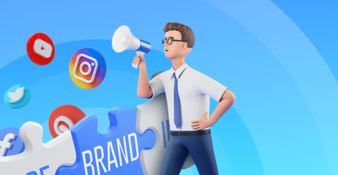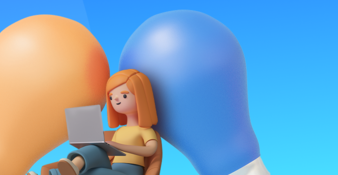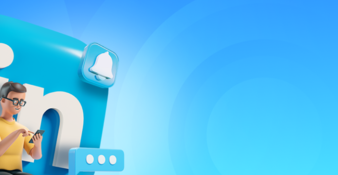Beer brands in the USA: a social media study
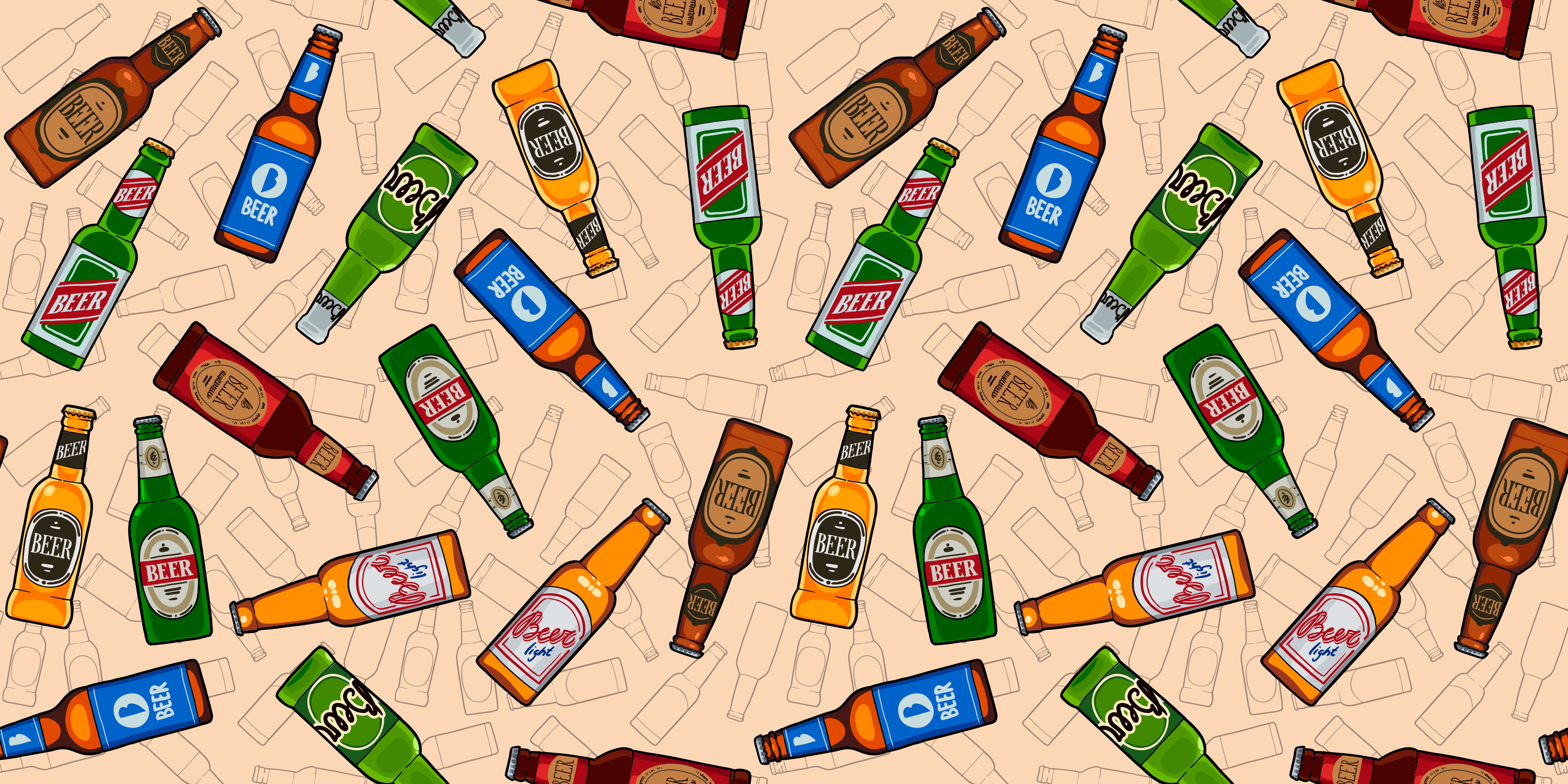
Beer is the glue that holds our society together.
Alright, maybe that’s only true for my peer group. However, one can’t deny the prevalence of beer in our lives. In the US only, the consumption of beer amounted to approximately 2.76 million 2.25 gallon cases in 2018. Beer also remains a preferred alcoholic drink in the US: in 2018 poll, beer was preferred by 42% of consumers (wine by 34% and spirits by 28%). The preference has been stable for years and is not expected to change.
In fact, revenue in the beer segment amounts to $118 billion in 2020. The market is expected to grow annually by 2.3% (CAGR 2020-2023).
So, here at Awario, we figured that doing a social listening study on beer and more precisely, on US beer brands, is only fitting.
We explored the following:
1. How a beer brand’s popularity online correlates with its market share.
2. How each one of the top 31 American beer brands compares in terms of:
- popularity on social media and news/blogs;
- reputation on social media and news/blogs;
- popularity by social media sources;
- activity of the brand’s own social media accounts.
3. How the popularity of US beer brands compares to the rest of the world’s beer brands.
Methodology
Using our social media monitoring tool Awario we collected mentions of the top 31 beer brands in America (according to USA today).
Period of time: September - December 2019
Sources: Facebook, News/Blogs, Twitter, YouTube (Reddit and Instagram were excluded as the analysis was localized to the US and those two don't return locations of the posts)
Languages: English
Criteria for getting into the results:
- a social media post should include the name of the beer brand as well as a beer-related keyword (e.g., “beer”, “drink”, “cold”);
- both the number of mentions and the reach of these mentions were taken into account;
- all mentions that came from the beer brands’ accounts were excluded (including the local ones, such as Heineken US).

Results
Brand popularity
The graph below shows the number and the reach of brand mentions.

So, does social media buzz raise sales?
As you can see, the popularity of brands on social media largely correlates with the brands' market shares. This reinforces what we kind of already knew - the popularity of brands online translates to brand awareness offline. Of course, let's not forget that correlation doesn't mean causation - the existing reputation of the brand might as well be the result of its online popularity, or something entirely different might explain both online and offline brand awareness.
Who are the social media winners?
If you take the market share into account, three brands stand out as being especially popular on social media: Busch, Guinness, and Heineken. The worldwide popularity of Guinness and Heineken ensures their top place in the US as well, while mentions of Busch include mentions of Busch the company as well, which may have resulted in its top place.
Who are the social media losers?
Again, if you take social media into account, the ones with a relatively small social media presence turned out to be Corona Extra, Modelo Especial, Keystone Light.
Who showed the most surprising results?
Milwaukee's Best Ice/ Milwaukee's Best Light are definitely underrepresented online considering their market share. This can be because their social media marketing is genuinely worse or because their brand name discourages people from writing about it. Or, of course, for some other reason. In any case, while we can't make a certain conclusion, this is another thing to consider when naming your brand.
Brands' reputation
The graph below shows the breakdown of brand mentions by their tone: positive, negative, or neutral.
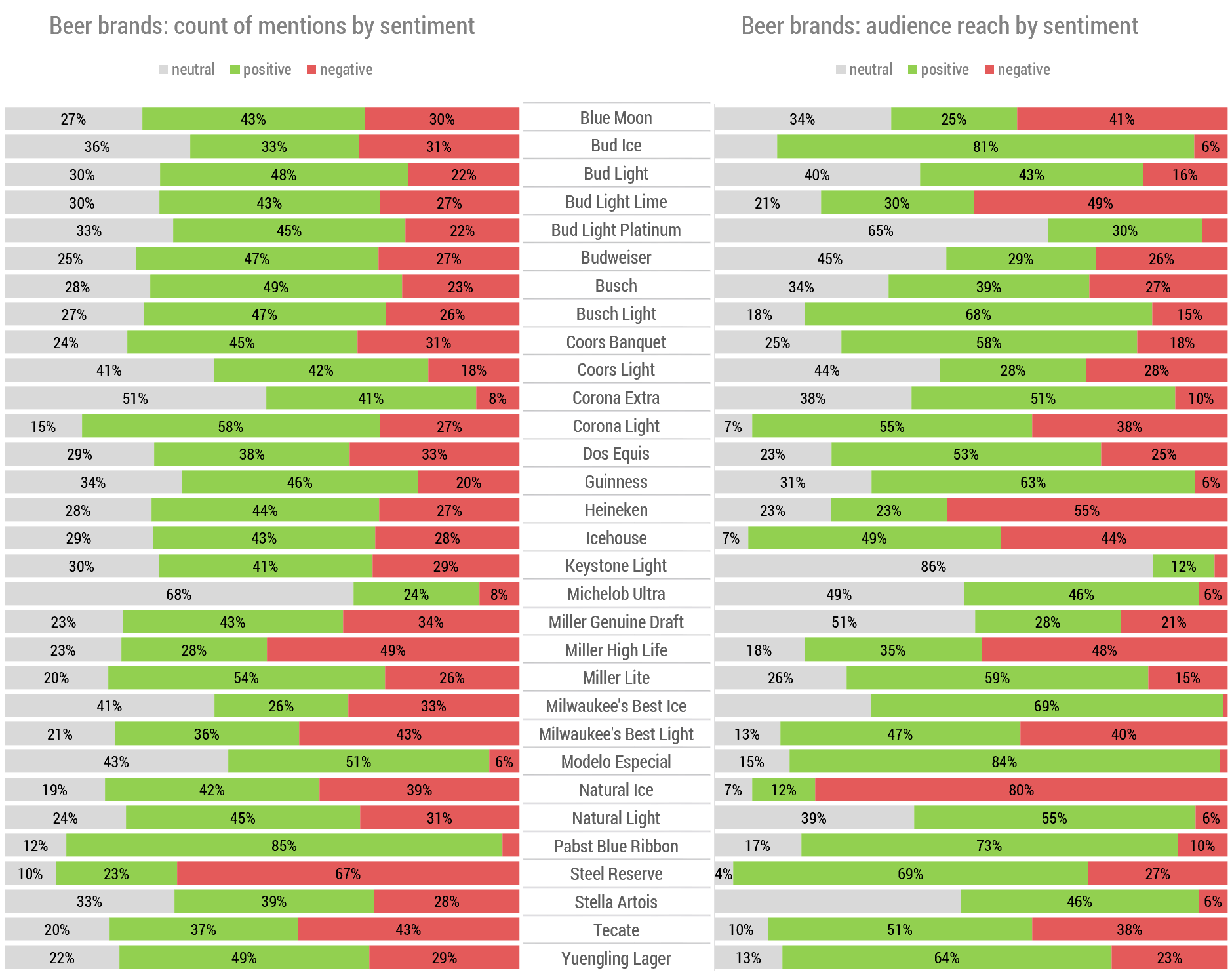
Who are the reputation winners?
Pabst Blue Ribbon and Modelo Especial seem to be the brands most liked by social media users. Corona Light and Guinness are sharing second place.
Who are the reputation losers?
Bud Light Lime and Miller High Life showed the most negative results.
Brands' coverage by online sources
The graph below shows a breakdown of mentions by social media networks and news/blogs.

The breakdown of mentions by sources tells us a couple of exciting things: generally, the biggest amount of brand mentions come from Twitter. However, mentions from Facebook get the biggest reach. As to brand mentions on news and blogs - they don't seem to be as influential in raising brand awareness as social media mentions are.
Companies' popularity
The graph below shows the number and reach of companies' mentions on social media and news/blogs.

Who are the winners?
D.G. Yuengling & Son are definitely the social media winners - they are the first ones getting the most attention considering their market share - both in terms of the number of mention and their reach. Most mentions come from Twitter, and these mentions are also the most influential.
Anheuser Busch is mentioned a bit less often, however, the reach of the sources that do mention it is wide and impressive.
Constellation and MillerCoors also showed really good results.
Brand comparisons by source
And here's a brand-to-brand performance comparison within the single platform. For example, which brands appear most often together on a single blog.
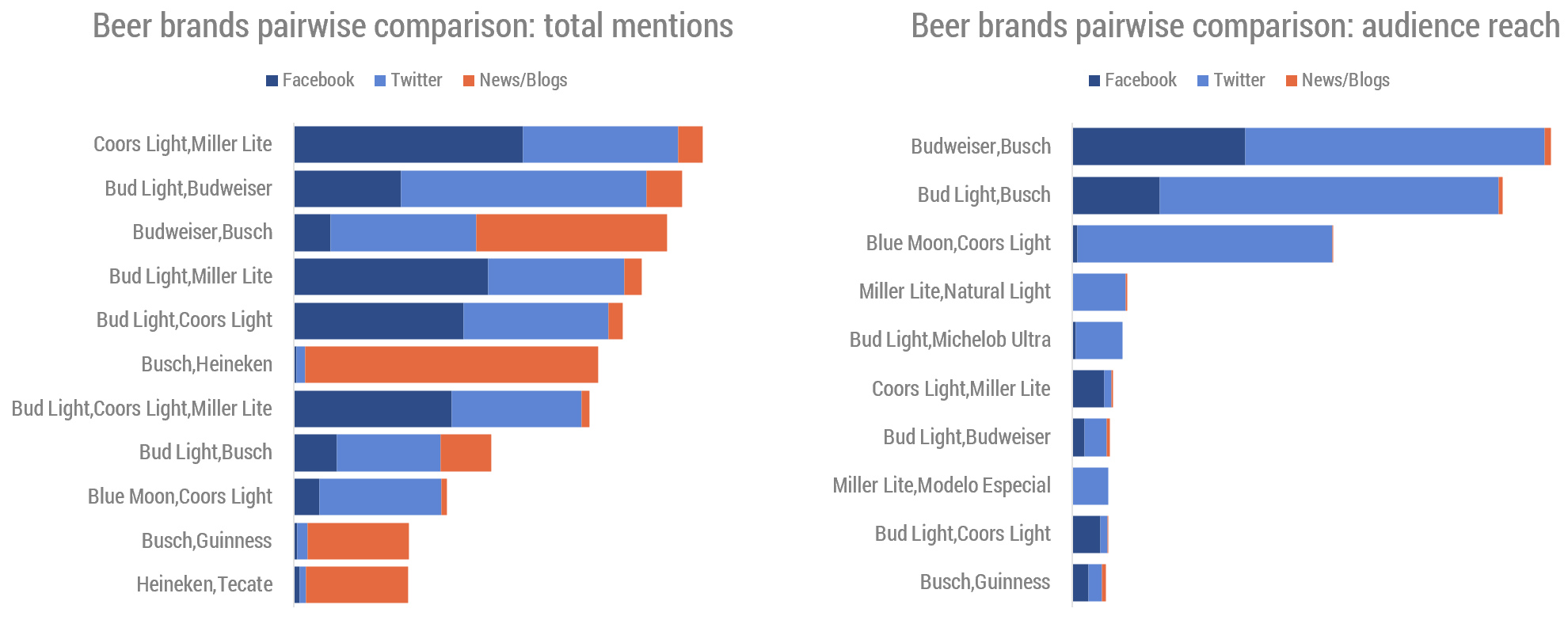
Of course, you often get different products of the same company featured on the same resource. The more interesting finding is to see which brands of different companies are featured together often. These were: Bud Light /Coors Light and Bud Light/Miller light, which are direct competitors. It's also interesting to note that the pair that is Busch/Guinness and Bush/Heineken only exist in the news and blogs, while the pair of Bud Light/Miller light is only seen on social media.
Brands' activity on social networks
Finally, we analyzed how much the brands' social media activity within their own accounts shaped their overall online presence/performance.

We found that the Anheuser-Busch company is active on Twitter and Facebook pages of all their brands (Budweiser, Busch, Bud Light, etc.). Again, is that the cause or the consequence of their market share? All we can tell is that successful brands spend a lot of time on their social media marketing.
Conclusion
First, we can conclude that in most cases the popularity of a brand online correlates with its overall success. That's not only useful to know for brands themselves, but also for researchers (e.g., competitor researchers): the numbers that are not open to anyone can be deduced from a study like this one. One can assess the level of a brand's awareness from its popularity on social media and news/blogs. You can find out how the online reputation of a brand correlates with its sales. You can also discover new opportunities for promotion and lead search after doing brand-to-brand comparisons with the direct competitor.
And here's something that lets you concentrate on one brand, on a couple of brands, or play around with the data in any way you like. Have fun with the stats and drink responsibly!











